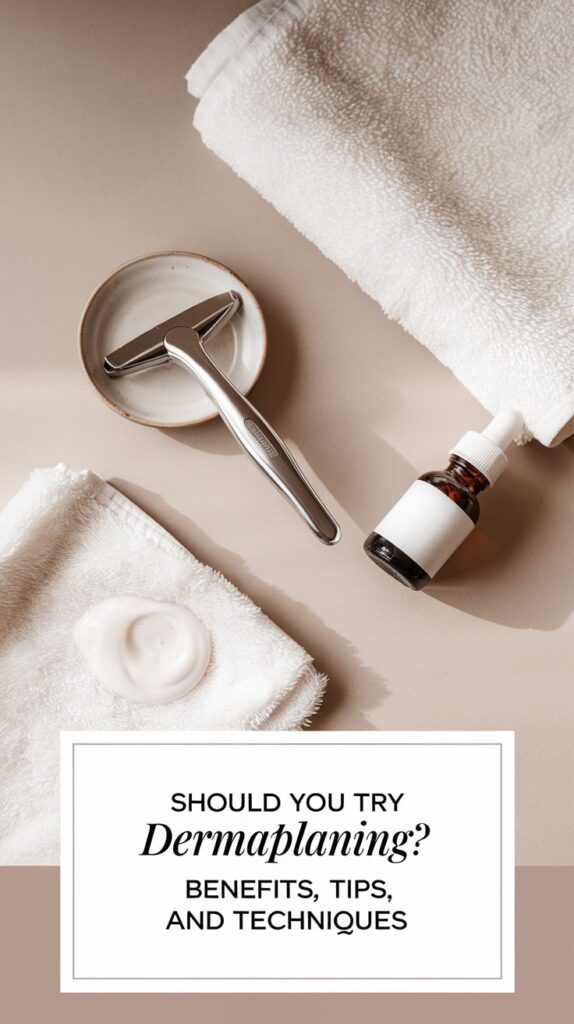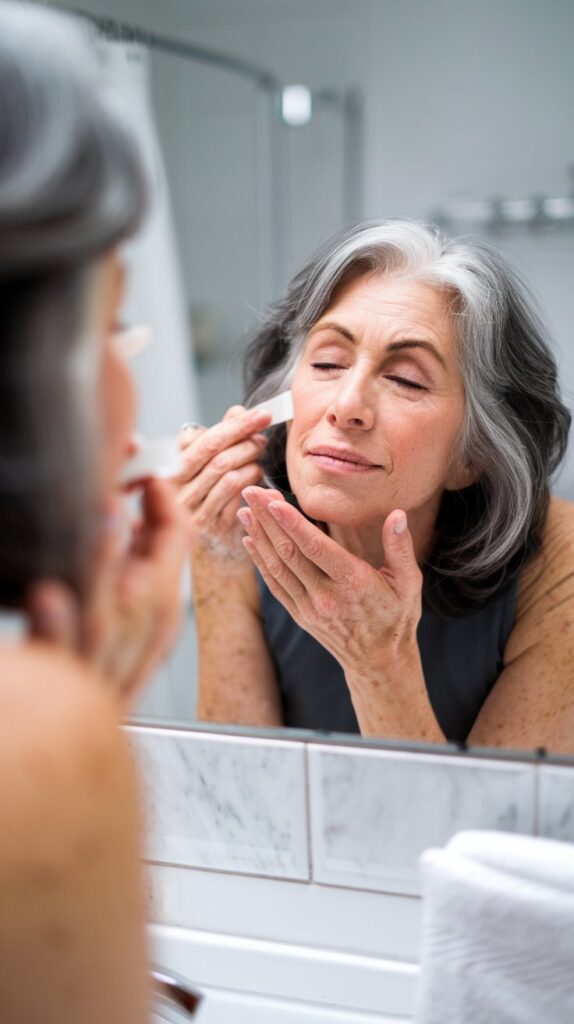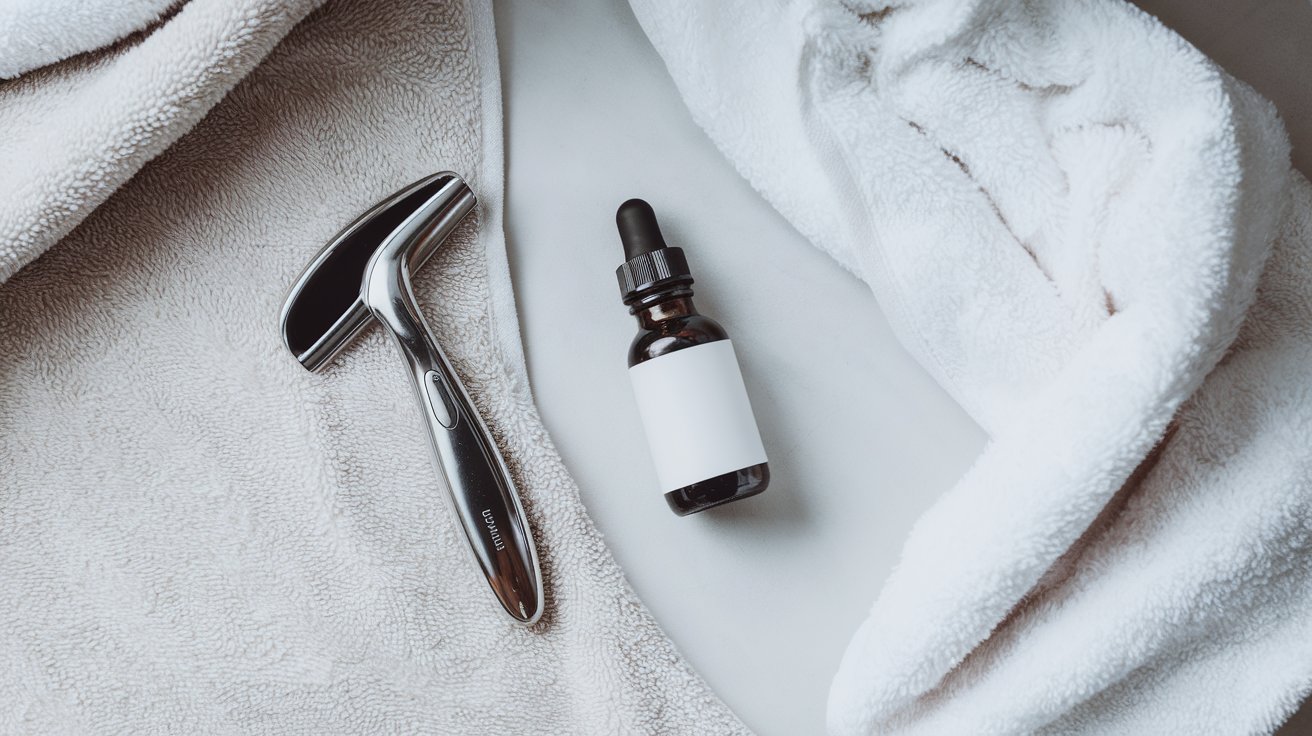Should You Try Dermaplaning? A Complete Guide to This Trending Skincare Practice
Affiliate Links are used on this blog. As an Amazon Associate, we earn from qualifying purchases.
Dermaplaning has been gaining popularity in the world of skincare, and for good reason. This gentle exfoliation technique not only removes dead skin cells but also gets rid of peach fuzz, leaving your skin looking smooth and radiant.
If you’ve been curious about whether dermaplaning is right for you, this guide will answer your top questions and help you decide if it’s worth a try. From benefits to techniques, here’s everything you need to know about dermaplaning.
1. What Does Dermaplaning Do?

Dermaplaning is a method of exfoliation that uses a small, single-blade razor to gently scrape away dead skin cells and fine facial hair (peach fuzz).
Benefits of Dermaplaning:
- Reveals smoother, brighter skin.
- Allows for better absorption of skincare products.
- Creates a flawless canvas for makeup application.
- Temporarily reduces the appearance of fine lines.
Why It Works: By removing surface debris, dermaplaning promotes cell turnover and leaves your skin looking refreshed and glowing.
Picture This: A serene skincare setup featuring a dermaplaning tool resting on a plush towel, surrounded by skincare serums and a glowing vanity mirror.
2. How to Dermaplane at Home

Dermaplaning at home can be a safe and effective way to achieve glowing skin—if done correctly.
Step-by-Step Guide:
- Cleanse Your Face: Start with a freshly washed face.
- Use a Clean Tool: Choose a dermaplaning razor designed for home use (not a regular razor).
- Hold Your Skin Taut: Use your free hand to gently pull the skin tight.
- Move in Short Strokes: Hold the razor at a 45-degree angle and use light, downward strokes.
- Moisturize Afterward: Apply a hydrating serum or moisturizer to soothe your skin.
Picture This: A woman in front of a bathroom mirror, dermaplaning with short, gentle strokes, her skin glowing in soft natural light.
3. Where to Dermaplane on Your Face
Dermaplaning is ideal for most areas of your face, but there are a few spots to avoid.
Safe Areas to Dermaplane:
- Cheeks
- Forehead
- Upper lip
- Jawline
Areas to Avoid:
- Eyelids or directly under the eyes (skin is too thin).
- Active acne or irritated skin.
Tip: Always move the razor in the same direction as hair growth to avoid irritation.
Picture This: A close-up of a face with sections marked to show “safe to dermaplane” areas, like cheeks and jawline, and “avoid” zones around the eyes.
4. Dermaplane Which Direction?
Always dermaplane in the same direction as hair growth (downward). This prevents irritation and ensures the tool glides smoothly over your skin.
Why This Matters: Dermaplaning against the grain can cause redness, irritation, or even small nicks.
Tip: Work in short, light strokes to maintain control and avoid over-exfoliating.
Picture This: A diagram of a face with arrows showing the correct downward motion for dermaplaning, with a razor angled at 45 degrees.
5. Are Dermaplaning Razors Allowed on Planes?
Yes, you can bring a dermaplaning razor in your carry-on bag when flying, as long as it’s a disposable tool with a safety blade.
What to Avoid:
- Traditional razors with detachable blades (these must go in checked luggage).
Tip: Pack your dermaplaning razor in a travel-friendly pouch to keep it clean and secure
Picture This: A sleek travel pouch with a dermaplaning razor tucked neatly inside, set against a carry-on bag in a minimalist airport setting.
6. Who Should Dermaplane?

Dermaplaning is suitable for most people, but it’s especially beneficial for those who:
- Want smoother skin for better makeup application.
- Have dull or uneven skin texture.
- Prefer a gentle exfoliation method.
Who Should Avoid It:
- People with active acne, eczema, or rosacea.
- Anyone with a history of skin sensitivity or frequent breakouts.
Tip: Consult with a dermatologist if you’re unsure whether dermaplaning is right for your skin type.
Picture This: A diverse group of women with glowing skin, highlighting the inclusivity and accessibility of dermaplaning for various skin types.
7. Why Dermaplane Instead of Shave?
Although dermaplaning might seem similar to shaving, it’s a much more precise and beneficial skincare technique.
Key Differences:
- Exfoliation: Dermaplaning removes dead skin cells in addition to hair, while shaving only removes hair.
- Tools: Dermaplaning uses a single, sharp blade designed for exfoliation, unlike standard razors.
- Results: Dermaplaning promotes brighter, smoother skin and better product absorption.
Picture This: A side-by-side comparison of a dermaplaning tool and a traditional razor, highlighting their distinct designs and purposes.
Is Dermaplaning Right for You?
Dermaplaning can be a game-changer for your skincare routine, offering smoother, brighter skin with minimal effort. Whether you try it at home or with a professional, this gentle exfoliation technique is worth considering for anyone seeking a glowing complexion.
Save this post for future reference and explore the benefits of dermaplaning today!




